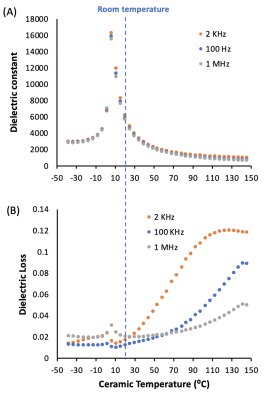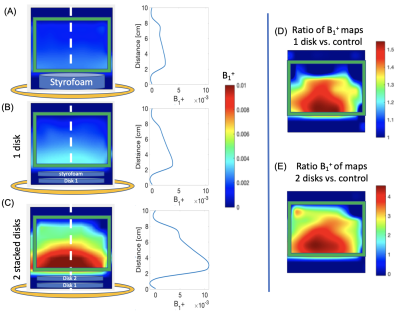Hannes Michel Wiesner1, Xiao-Hong Zhu1, Maryam Sarkarat2, Xin Li1, Matt Waks1, Michael T. Lanagan2, Qing X. Yang3, and Wei Chen1
1CMRR, Department of Radiology, University of Minnesota, Minneapolis, MN, United States, 2Department of Engineering, Pennsylvania State College of Engineering, University Park, PA, United States, 3CNMRR, Department of Neurosurgery, Penn State University, Hershey, PA, United States
1CMRR, Department of Radiology, University of Minnesota, Minneapolis, MN, United States, 2Department of Engineering, Pennsylvania State College of Engineering, University Park, PA, United States, 3CNMRR, Department of Neurosurgery, Penn State University, Hershey, PA, United States
The newly developed BST-BT ceramics enabled unprecedented (> 4 times) improvements in RF transmission efficiency, reception sensitivity and SNR for room temperature 17O MRSI applications at 10.5T.

Figure 1 Temperature dependence of dielectric constant (A) and loss (B) measured in the BST-BT uHDC disks at three measurement frequencies.

Figure 3 Representative B1+ maps in axial orientation (left panels) and B1+ profiles along the vertical dashed lines acquired under (A) control without the uHDC disks, (B) with one uHDC disk and (C) two stacked disks. The ratio images between (D) one uHDC disk versus control and (E) two stacked disks versus control. The yellow rings represent the 15-cm 17O RF coil.